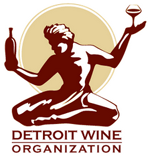There are six grapes that you really need to know about. Riesling, Sauvignon Blanc and Chardonnay are the white grapes. The reds are Pinot Noir, Merlot and Cabernet Sauvignon. These grape varietals are known and produced around the world. We’ll learn a bit about each grape, its aromas and flavors, and potential food pairings.
Grape number five in our crash course is Merlot (mehr-LOH). Much maligned, particularly after the major character Miles in the movie “Sideways”, asked for “anything but Merlot” this frequently fruit-forward grape is the dominant grape in red Bordeaux wines. It’s back on track to being a very popular wine. Merlot is made as a single varietal in much of the New World (the world outside Europe) and is a very versatile wine.
Merlot is a relatively thin-skinned varietal and ripens earlier than its frequent blending partner, Cabernet Sauvignon. Softer and lighter in tannins than Cabernet Sauvignon, the medium acidity helps to make the wine much more approachable early on than many other red wines. The blue-black grapes produce an attractive deeply colored wine. This grape supposedly derives its name from the word “merle”, French for blackbird, reflecting the dark color of the loose bunches of large grapes.
One of the best known and expensive wines on the planet, Chateau Petrus, is made mostly from this charming grape. While Chateau Petrus is eminently ageable, most Merlots are ready to enjoy when bottled.
Cherries, plums, bell peppers, chocolate and tobacco are aromas and flavors frequently found in Merlots. Vanilla, nutmeg and clove are also discernible, depending on the oak used to age the wine. These wines are usually medium-bodied, however when blended with Cabernet Sauvignon, they take on a heftier weight. Merlot is one of the varietals used in creating Bordeaux blends.
As with Pinot Noirs, New World and Old World styles differ rather significantly. In the New World, California, Washington and Chile are your best choices. The finest California Merlots are produced primarily in the Napa Valley and Dry Creek Valley of Sonoma County. Washington State Merlots are usually deeper, darker and richer than their California counterparts. Chilean versions are great values, offering more earthy, herbal and chocolate notes than their New World wine cousins.
In the Old World, French versions usually blend Merlot with varying percentages of Cabernet Sauvignon, Malbec, Cabernet Franc and Petit Verdot. Bordeaux wines are some of the best, expensive and long-lived wines in the world. These versions of Merlot-based wines are denser, more tannic than their New World counterparts. These are truly “food wines”. They are most enjoyable when paired with dishes containing fat. Sauces such as Hollandaise and Béarnaise are accentuated by Old World Merlots as are flank steaks and filet mignon.
Lighter style wines with less tannin and higher acid match well with grilled and roasted poultry and game, especially duck. Even salmon and tuna are better when enjoyed with a light merlot. Think of these wines as Pinot Noirs on steroids.Merlots that are fruity, medium bodied, middle of the road in tannins, and moderately acidic go great with All-American classics hamburgers and pizza. Some Mexican or Tex-Mex entrees such as chicken or steak fajitas and quesadillas are highlighted by a middle-of-the-road Merlot.
For grilled or roasted meats weightier, more tannic Merlots are excellent matches. Wines from Washington State and Chile are value choices. Of course, Bordeaux is the classic Merlot-based pour to pair with heartier entrees. Lamb and venison are superb when served with a big, beautiful Bordeaux.
©2017 Wine Counselor LLC

Michael A. Schafer Esq.
Michael is a member of the DWO board of directors
Sommelier, Certified Specialist of Wine, Certified Specialist of Spirits, Certified Culinary Travel Professional
The Wine Counselor® I taste bad wine so you don't have to ®

Leave A Comment